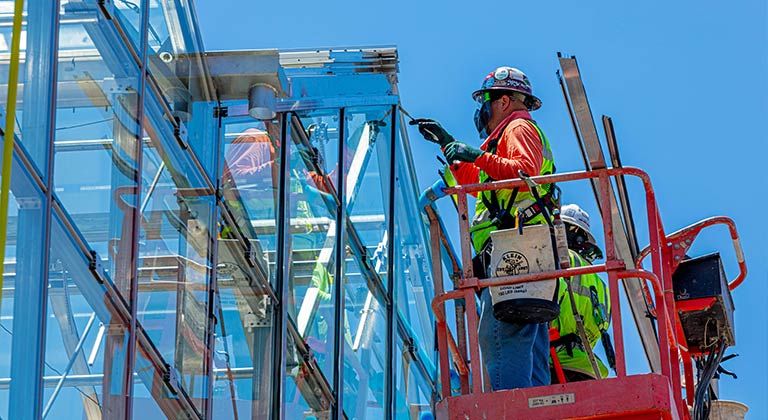
While construction industry accidents and safety disasters are, on the whole, quite rare within the U.S., they still have a measurable impact on the industry, especially since they tend to draw public attention. Many of those who aren’t involved in the construction industry only take note when these types of disasters strike.
As construction industry professionals, Giroux Glass places safety as our highest priority. We take pride in our safety record and work hard every day to ensure the safety of our workers, and the community at large.
High Profile Construction Accidents
Every year, we are faced with news of high-profile construction accidents and disasters. In 2019, we saw the devastating collapse of the Hard Rock Hotel project in New Orleans. In 2018, a pedestrian bridge at Florida International University collapsed, devastating the local Sweetwater community. And in 2013, a Philadelphia building in the midst of demolition unexpectedly collapsed onto a neighboring store.
There are examples from every decade and nearly every year in the U.S. and across the world.
Large-scale construction projects often require the use of heavy machinery and unstable structures. Without proper safety precautions at every step of the process, the results can be extremely dangerous.
And with so many moving parts at every construction site, it’s often difficult to determine the exact oversight or mistake that led to an accident. That’s why every company and individual on a job must adhere to the highest standards of safety, and constantly strive to improve protocol and performance.
How Construction Accidents Impact the Industry
Without losing sight of the casualties and injuries that can result from the type of devastation outlined above, we can examine how these types of high-profile accidents have an effect on the construction industry as a whole. One impact is increased scrutiny from the insurance companies that work with construction projects. In the case of a major disaster, it is these insurance companies that end up paying out, which explains why these companies are so deeply invested in construction industry safety. In the wake of recent issues, we can expect a few particular areas to face increased attention.
Communication
Communication lines between general contractors, subcontractors, architects and all other stakeholders — including workers — must remain open at all times. It is often workers on the project who first notice that something may be amiss and putting a project at risk, which means they must feel empowered to take their concerns up the chain of command. It also means that supervisors must be ready to listen to concerns, even when it might slow progress.
Proactivity
Responding to safety concerns is certainly critical, but project managers must also have plans in place to be proactive when it comes to safety. In addition to proper training protocols, construction projects require continuous monitoring of conditions and a willingness to investigate every report and issue that arises over the course of a job.
Worker Hiring & Training
Workers on a construction site are responsible for their own safety, as well as that of their colleagues and the community around them. When companies cut corners by hiring workers without proper experience or training, they are putting entire projects at risk.
EMR Rating
One objective measure of safety within the construction industry is the EMR rating. EMR stands for Experience Modification Rate. EMR is one way that insurance companies decide how much to charge construction companies for premiums and is based on the cost of past injuries as well as the expectation of future risk.
Giroux Glass is proud to have an EMR rating that is well below industry average for general contractors as well as glazing subcontractors. Our history of few injuries and accidents is the result of decades of experience and investment in our workers and their safety.